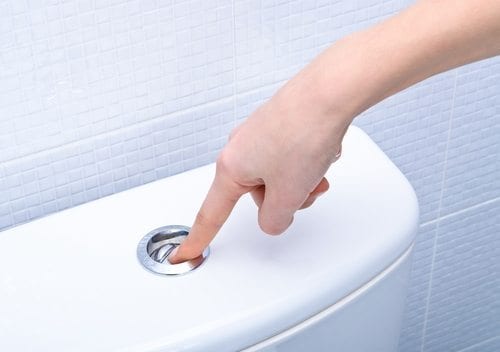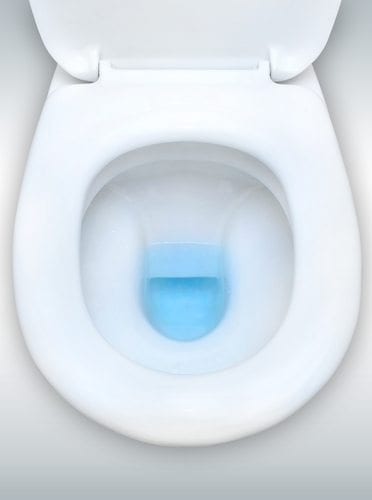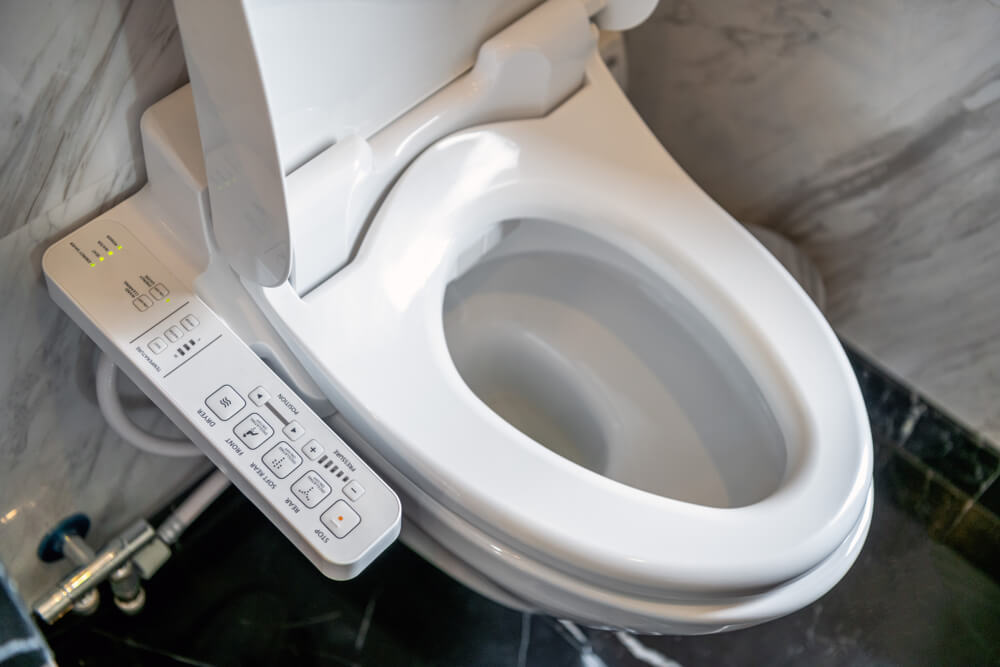Blog
10 Latest Toilet Upgrades & Innovations

One of the biggest upgrades a bathroom can receive is a new, high-water-efficiency toilet. Toilets are excellent investments because they are sturdy, long-lasting, require little maintenance, and are used daily. Toilets tend to become a permanent fixture in a house and last for decades.
A water-efficient toilet is one of the most important upgrades for your bathroom. These toilets save thousands of gallons of water every year compared to previous models. Beyond low-water flush toilets, there are smart toilets that offer a number of unique and useful upgrades that improve comfort, utility, hygiene, and convenience.
Low Flush Toilets

One issue that many engineers and city planners have been trying to solve is freshwater efficiency. Many cities are running short on their supplies of fresh water and need to be as efficient with it as they can.
Water shortages lead to higher water bills, which encourages homeowners to try to be as water-efficient as possible. Because toilets are a huge part of a household’s water consumption, new designs have increased water savings dramatically. While not the most recent of innovations, we consider water-saving toilets the number one upgrade any household should consider.
Unfortunately, even if still functioning, older toilets weren’t designed with water efficiency in mind. Older toilets can use as much as three (1990s) to seven (1980s) gallons of water per flush and are one of the most water-intensive activities in most homes, accounting for 30 percent of total household water consumption.
Additionally, over time, seals weaken, and they can start to leak from underneath. A professional plumber can easily re-seat a toilet to fix the leak, but it may be time to upgrade your toilet to something more efficient and modern.
Ultra Low-Flush (ULF) Toilets
These models comply with the new required Federal maximum stands of 1.6 gallons per flush (GPF). Ultra-low flush models began to be installed in residential construction back in 1994 and are now the Federal standard requirement. If your toilets are older than the year 2000, they may be older models that use over three gallons of water to flush.
The water savings in upgrading from an older toilet to an ultra-low-flush toilet model are such that it will pay for itself, usually within the first year or two.
High-Efficiency Toilets (HET)
The latest innovation in water-saving toilets, High-Efficiency Toilets (HET), uses only 1.28 gallons per flush, dropping water usage even further than the Ultra-Low Flush toilets. Over the course of a year, an average family can save as much as 13,000 gallons of water with an HET toilet versus a ULF model.
Some homeowners are concerned that these high-water efficiency toilets won’t perform as well as their older counterparts. These new toilets are better designed to properly suck everything down without getting stuck or clogged even though less water is used.
These toilets have met the WaterSense and EPA’s efficiency and performance requirements, so clogging or having to double flush should not be a problem.
Dual Flush Toilets
Dual flush toilets have two buttons to allow users to select how much water is used. The unit only consumes 0.8 gallons for liquid waste, making it even more water-efficient than HET toilets. They use the standard 1.6 gallons for a full flush to ensure everything goes down.
What Are Smart Toilets?

As smart technology has become more prevalent in homes, engineering minds have been wondering what features could be added to revolutionize toilets.
Smart toilets use advanced sensors, programs, and electronics to offer improved comfort and convenience. The sensors can detect users and use that information to activate programmed responses like automatic flushing.
Smart Toilet Features
As smart toilets advance, more and more features are developed. These smart toilets feature improved hygiene, convenience, water efficiency, and comfort.
Here are ten smart toilet technology feature trends:
- Automatic Flushing: Sensors detect when the toilet is no longer being used and then trigger an automatic flush. This eliminates the need to touch any dirty buttons as well as helps those children and family members who might forget to flush. Different models may offer automatic flushing, remote control and app flushing, foot pedal flushing, and even voice command flushing.
- Self-Cleaning: A very popular feature sweeping the markets is self-cleaning. Seats, bowls, and more can be automatically cleaned of bacteria by shining anti-microbial UV lights. These lights are specially designed to kill microbes and keep surfaces clean.
- Automatic Lid Closing: Do certain family members struggle to remember to close the lid? Popular models have automatic lid closing and opening features. This way, you don’t have to worry about remembering to close the lid. These lids have soft close features that eliminate the loud banging of toilet sets when slammed closed.
- Automatic Odor Detection: Smart sensors detect unwanted odors and release air fresheners to deodorize and eliminate foul smells.
- Heated Seats: No one likes to sit on a cold toilet seat on a winter day. Heated seats make cold mornings much more comfortable.
- High Tech Bidets: Bidets replace the use of toilet paper and clean genitals with water instead. New technology allows bidets to use tankless water heaters to create on-demand warm water for a comfortable experience. Warm air blowers dry the user for a seamless experience.
- Usage Report Monitoring: Some smart toilets are equipped with sensors to track how often the toilet is used, which allows the city to better predict water requirements and allocate resources accordingly. Other sensors can analyze the contents of toilets, which gives cities a better understanding of what waste is being produced or if there are food contaminants they need to track down.
- Water-Saving Features: With the use of better drain designs, sensors, and smart technology, smart toilets can reduce water usage by 25 percent.
- User Programming & Settings: Smart toilets are continually getting smarter, allowing users to program preferences into toilets for a better experience. Users now have a wide range of settings to choose from. For example, many models offer customizable bidet settings: a straight water stream, a pulsating stream, movement and positioning of the stream wand, the temperature of the water, and more.
- Higher Grade Materials: While toilets are well-known for their durability, the materials used can be improved. High-grade ceramics with proprietary finishes keep toilet bowls extra slick, keeping the bowl clean. Higher-grade materials can also be used in the electronics and other components of the smart toilet, increasing service life and reducing required maintenance.
Are you interested in low-flow or smart toilets? Call Apollo Home for high-quality service, honest opinions, and upfront pricing. We install low-slow and smart toilets in Cincinnati, Northern Kentucky, and Dayton, Ohio. Contact us for more information.


